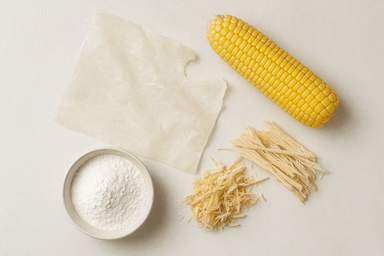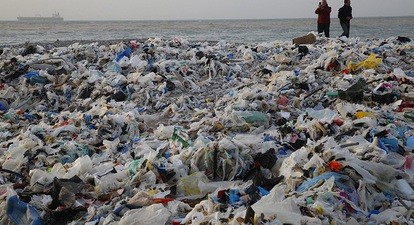Imagine a world where grocery bags and food wrappers don’t linger in landfills for centuries but break down harmlessly into the soil within weeks. Researchers at INTI International University are shaping this vision.
Their work focuses on a prototype plastic made not from petroleum, but from sago starch and agricultural waste such as corncobs and sugarcane bagasse. By reusing materials that are often discarded or burned, the team has turned waste into a resource with the potential to cut plastic pollution at its root.
The science lies in the blend. Sago starch forms the base, while cellulose fibres from farm waste reinforce it, adding natural durability. Together, these components create a material with tensile strength comparable to – and in some cases stronger than – low-density polyethylene (LDPE), the plastic widely used in shopping bags and food packaging.

Prof. Dr. Tezara Cionita, Professor at the Faculty of Engineering & Quantity Surveying (FEQS), INTI International University, who led the research on sago starch–based bioplastic.
“One of our goals was to ensure the material’s performance would be acceptable to industries already using LDPE,” said Prof. Dr. Tezara Cionita, Professor at the Faculty of Engineering & Quantity Surveying (FEQS), INTI International University.
Strength is only one part of the breakthrough. The real difference comes after use. Unlike petroleum-based plastics that persist for centuries, this bioplastic is designed to return safely to nature. Soil tests showed complete degradation within 50 to 85 days – a striking contrast to the stubborn persistence of conventional plastics.

The prototype bioplastic is made from sago starch reinforced with cellulose fibres from corncobs and sugarcane bagasse.
Equally important is its practicality in production. The prototype can be moulded using existing plastic manufacturing methods, which makes it commercially attractive. “The material’s mouldability means industries don’t need to reinvent their production lines,” Prof. Tezara explained.
The regional context adds further weight to the innovation. Southeast Asia is rich in sago palms and agricultural by-products, making raw materials both cheap and abundant. This creates not only opportunities for sustainable packaging but also the potential for green industries that could benefit rural economies.
Even so, hurdles remain. Scaling up production, testing durability in varied conditions, and securing industry adoption are critical next steps. Yet the direction is clear – a future where plastics are not the earth’s burden but part of the solution.

Soil tests showed the bioplastic degraded fully within 50 to 85 days, unlike petroleum-based plastics that persist for centuries.
“We see this as more than just a material innovation,” Prof. Tezara said. “It’s a step towards a circular economy, where waste becomes a resource, and products are designed with their end-of-life in mind.”
With Southeast Asia’s abundance of sago and agricultural by-products, the project shows how local resources can be turned into global solutions. It is a reminder that answers to global problems may lie in materials and methods already close at hand.